Solutions for Single Sided Hearing Loss
If you have lost all usable hearing in one ear, this is known as single-sided deafness (SSD). Having no usable hearing on one side makes it very difficult to both locate sounds and follow conversations in noisy environments. This combination can make everyday life quite challenging. Fortunately, at the Hearing Center at Dallas Ear Institute, we offer the following solutions to help manage SSD. Our Audiologists can discuss these options with you and help you decide which solution best meets your individual needs.
Both the CROS/BiCROS System and Bone Conduction Device solutions collect sound from your poorer hearing side and send the sound to your better hearing ear. This helps you hear sounds all around you and allows you to detect sounds from your poorer side without turning your head. You can participate in conversations more easily with an SSD device, hearing speakers on both sides of you. The CROS/BiCROS System uses wireless transmission and the Osseointegrated Device and ADHEAR use bone conduction to send sound from the poorer side to the better hearing ear.
Wireless Transmission – the Cros/bicros System
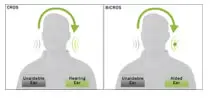
The CROS/BICROS system consists of two devices, a microphone/transmitter and a receiver device, that each look like a small, discreet hearing aid. The microphone with transmitter device is placed behind or inside your poorer ear to pick up sound, which is then transmitted wirelessly to the receiver on the normal or better hearing ear. If there is hearing loss in your better ear, the receiver device may also be used as a hearing aid to improve your hearing while receiving the signal from your poorer ear. No surgery is required. Pricing for this system depends on your particular listening needs. Insurance may assist with the cost of this system if you have a hearing aid benefit in your insurance plan.
Bone Conduction – Osseointegrated Device (Baha/ponto)
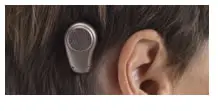
An Osseointegrated Device (commonly referred to as Baha) picks up sound waves via a microphone in much the same way as a conventional hearing aid. However, the osseointegrated device then transforms received sounds into sound vibrations and sends them, via the abutment and osseointegrated implant, through your skull directly to the better hearing ear. This is known as bone conduction. This device is typically used with a titanium abutment that is surgically placed, but a non-surgical headband option (commonly used for young children) is also available. For adults, the procedure is a day-surgery with no overnight stay. The implant and abutment are placed into the skull and, with time, will integrate into the bone. The osseointegrated implant is a permanent piece that allows the sound processor (pictured) to attach and transmit sound efficiently to your better hearing ear. Insurance may assist with the cost of this device, depending on your insurance plan.
Bone Conduction – Adhear
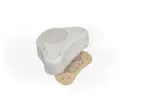
ADHEAR is a non-surgical bone conduction device consisting of a hearing device and an adhesive adapter. An adhesive adapter is placed on the skin behind the ear and can be easily replaced every 3 to 7 days. A hearing device snaps onto the adhesive adapter. The hearing device picks up sound and uses the adhesive adapter to transmit the sound through the bone to the inner ear.
Remote Microphone
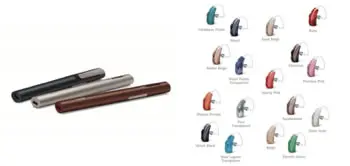
A remote microphone is a wireless solution used to transmit sound from a distance to the normal hearing ear. This system consists of a microphone worn by the talker (known as a transmitter or remote microphone) and a receiver worn by the listener. The receiver is a small earpiece that looks similar to a hearing aid or Bluetooth device. These devices are frequently used in a classroom or lecture setting. A single speaker’s voice (such as a teacher) is transmitted directly to a student’s ear, overcoming the noise, echo and distance between them. Remote microphone technology can also be very useful riding in the car or shopping at the grocery store. With the use of certain microphones, this can also be a solution for better hearing in small group settings with multiple speakers around a table or in the more intimate conversation of a business meeting or dining in a restaurant. No surgery is required. The receivers come in multiple colors, either to blend with hair or skin or bright colors to be bold and beautiful. Insurance typically does not assist with the cost of this system.
Cochlear Implant
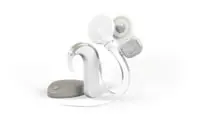
A CROS/BICROS System or Osseointegrated Device work by routing sound from the deafened side to the opposite, better ear. In contrast, for appropriately selected patients, a cochlear implant (CI) can stimulate the nerve endings in the deafened ear and produce a sense of hearing on the poorer hearing side. A CI is the only device that can restore a sense of hearing in the deafened ear. However, this option comes with some limitations. The hearing produced with a CI will not be the same as a normal hearing ear. Patients who have normal hearing in the opposite ear may find it difficult to get used to the new sound from the CI in the deafened ear. The CI process is very involved, requiring surgery and frequent post-surgery programming sessions and auditory-verbal therapy appointments. Some patients do not want to undertake this extensive process if they have normal hearing in the better ear. The Food and Drug Administration (FDA) has not approved a CI for treatment of SSD, thus, Medicare and most insurances do not provide financial coverage for a CI unless both ears have severe hearing loss. Therefore, a patient who wants to receive a CI for SSD may have to pay out of pocket with a cost approaching $38,000.

